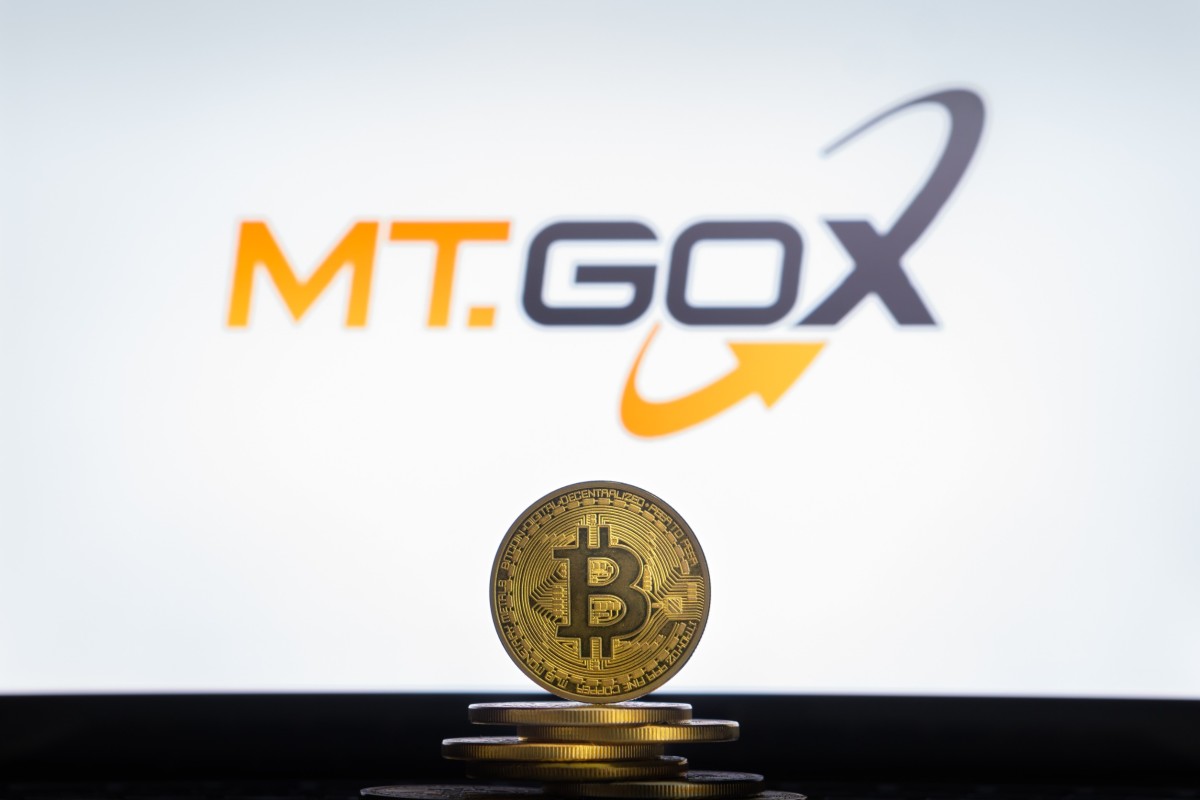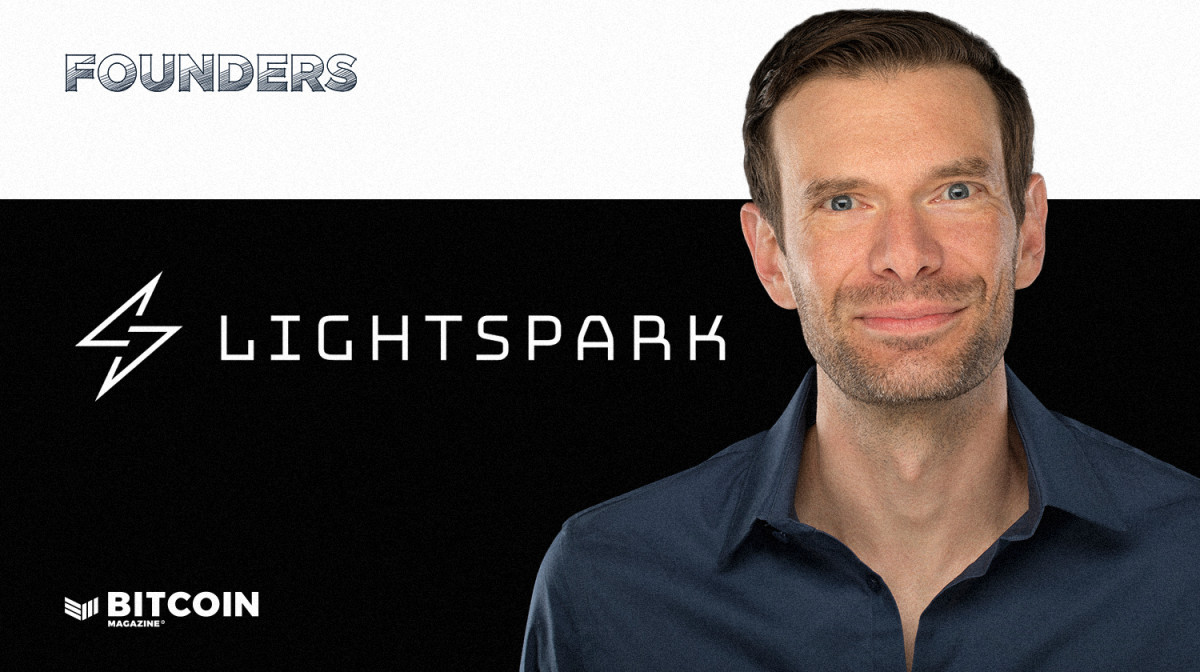business
Bitcoin Treasury Firm DeFi Technologies Claps Back at Report That Tanked Its Stock
Published
2 weeks agoon
By
admin

We do the research, you get the alpha!
Get exclusive reports and access to key insights on airdrops, NFTs, and more! Subscribe now to Alpha Reports and up your game!
One of the most high-flying crypto stocks came crashing back to Earth this week after a report argued that it wasn’t rising “for the right reasons.” Today, the company issued a strenuous defense of its business.
In its Tuesday issue, crypto newsletter CoinSnacks outlined an extensive marketing campaign undertaken over the past few months to provide positive coverage for DeFi Technologies (DEFI)—a Toronto-based crypto fund provider that publicly trades on Canada’s Chicago Board Options Exchange (CBOE).
The price of DEFI stock has risen sharply along with other companies that have adopted Bitcoin as their primary treasury reserve asset, following the massive success of MicroStrategy (MSTR), now the top institutional holder of BTC. Amid the excitement, some analysts began waxing bullish on DEFI for fundamental reasons, claiming that it’s supremely undervalued.
On the Monday before the report went out, DEFI traded for CAD $3.30, up 202% since May 31. As of Tuesday’s close, the stock had cratered 35% back to CAD $2.24 per share.
The company’s promotional efforts have included a paid email and influencer campaign to put its name in the headlines, CoinSnacks reported to its 50,000 subscribers, as well as endorsements from Anthony Pompliano and Will Clemente—popular crypto investors whose market analysis firm, Reflexivity Research, was acquired by DeFi Technologies in January.
DeFi Technologies has surged over 3,400% in the past 12 months, dwarfing the gains of BTC, ETH, & SOL combined.
However, a recent promotional campaign has raised critical questions about the transparency & motivations behind this rally.$DEFTF $DEFI.NEhttps://t.co/gJkSLfg0Wv
— CoinSnacks (@CoinSnacks) June 18, 2024
“Between the influencer pumps, getting mentioned on CNBC, the email campaigns, and Pomp pomping, there is now strong evidence that the stock isn’t rallying for the right reasons,” wrote CoinSnacks.
DeFi Technologies responded to the CoinSnacks report in a press release at Wednesday’s open, calling it “defamatory, selective, inaccurate,” and containing “misleading statements” about the company’s practices and financial condition.
In fact, the company speculated that the report may have been commissioned by short-sellers hoping to depress the stock’s price.
DeFi Technologies said it was approached on June 10 by a Canadian investment bank with a bought-deal offer for US $15 million—an unusual offer given the newfound strength of the company’s treasury, and its lack of need to raise more funds. That same day, DeFi Technologies reported that it held US $51 million in cash on its balance sheet, plus another US $7.9 million in Bitcoin (110 BTC).
“The company believes that coordinated efforts of short-sellers and issuance of misleading reports on public companies constitute market manipulation,” DeFi Technologies wrote.
Our Response to DeFi Technologies
Yesterday, we published a report explaining why we believe @DeFiTechGlobal‘s recent stock price run-up was built on promotion—not fundamentals.
You can and should read that here: https://t.co/gJkSLfg0Wv
Today, with the market closed, we woke…
— CoinSnacks (@CoinSnacks) June 19, 2024
CoinSnacks later replied to DeFi Technologies stating that it had “not currently, nor have we ever been, paid by a short-seller to cover any company,” nor did its team hold a position in DEFI.
By Wednesday’s close, the company’s stock experienced a modest 6% rebound to CAD $2.30 apiece.
The CoinSnacks newsletter did not extensively cover DeFi’s Techology’s recent financial performance, instead referencing its days as a “penny stock” in 2023, when it generated a net loss of CAD $18.9 million across the year.
The company points to its profits so far this year as proof that its stock is a worthwhile investment.
DeFi Technologies says its assets under management have risen massively alongside the broader crypto market this year, which also boosts the rewards earned from its investments in crypto funds. Those include exchange-traded funds for Solana, Bitcoin, and dozens of other assets for which the firm is allowed to stake its holdings and earn yield—earning an average of 7 to 10 percent on the assets it holds.
Post-acquisition, I had been rather quiet about $DEFTF & why Anthony and I decided to get acquired in all stock.
Now having traded up ~3x, it appears the market is validating our view that the firm is undervalued. This write-up from Eric is one of the best I’ve read on why: https://t.co/36mVnrnvwB
— Will (@WClementeIII) June 12, 2024
“Our assets averaged about US $400 million to $450 million in Q1, and in Q2, they’re gonna average US $600 million to $650 million,” Russell Starr, Head of Capital Markets at DeFi Technologies, told Decrypt.
Those same assets under management (AUM) earned the company’s operating business US $10 million in revenue in the first quarter, enough to cover all of its expenses for the entire year, Starr said. Given that its current AUM is now 50% higher, he said DeFi Technologies expects to earn at least US $15 million for each of the following three quarters in pure profit.
Meanwhile, Starr said the firm’s newly launched DeFi Alpha trading desk earned $85 million in the second quarter of 2024 alone. That brings the firm’s net profit for its first six months up to $100 million—over 20 percent of its current $477 million market cap.
For context, other crypto firms like Coinbase and Robinhood currently trade at 30x and 40x their annual profits.
“If you look at that article they wrote, they didn’t talk anything fundamental,” said Starr. “The reason why is because if they took the time to talk about fundamentals, they would have realized very quickly that they have no story.”
This article has been updated to correct DeFi Technologies’ reported cash and Bitcoin holdings. Edited by Ryan Ozawa.
Daily Debrief Newsletter
Start every day with the top news stories right now, plus original features, a podcast, videos and more.
Source link
You may like


Multicoin Capital pledges up to $1m to pro-crypto Senate candidates


MATIC Price Crash: Reaching A Two Year Low


Multicoin Pledges up to $1M for Pro-Crypto Senate Candidates


Crypto heists near $1.4b in first half of 2024: TRM Labs


FTX Founder Sam Bankman-Fried’s Family Accused Of $100M Illicit Political Donation


Bitcoin Price Falls as Mt Gox Starts Repayments
Bitcoin price
Bitcoin Price Falls as Mt Gox Starts Repayments
Published
8 hours agoon
July 5, 2024By
admin

The Bitcoin price plunged this week, sinking below $55,000 for the first time since February as the now-defunct Mt Gox exchange began distributing billions in owed funds.
Mt Gox announced it has started repaying creditors, ending years of waiting stemming from its 2014 collapse. The Japan-based exchange will distribute approximately $9 billion worth of Bitcoin, Bitcoin cash, and fiat currency.
The news added heavy selling pressure on Bitcoin, which fell over 6% on Friday to trade near $54,000. The broader Bitcoin and crypto market shed over $170 billion in 24 hours amid the declines.
On Thursday evening, Mt Gox moved around 47,000 Bitcoin worth nearly $2.7 billion from cold storage wallets to a separate address. While intentions remain uncertain, the transfer fueled concerns creditors may sell portions of recovered coins.
The payouts come after protracted bankruptcy proceedings for Mt Gox, which suffered a massive hack in 2014 that resulted in 850,000 Bitcoin being lost. It was the largest crypto exchange at the time, handling 70% of all Bitcoin transactions.
The repayment of creditors marks a major step toward resolving Mt Gox’s decade-long insolvency case. However, the influx of previously lost coins threatens to shift supply and demand dynamics.
Some analysts estimate selling pressure from payouts could push Bitcoin’s price as low as $50,000 in the near term. Ongoing transfers from the German government have also weighed on the market.
However, others argue the amounts equate to a small fraction of daily Bitcoin trading volumes. They say most creditors are long-term investors unlikely to dump holdings en masse, limiting impacts.
Nonetheless, analysts widely expect significant volatility ahead between Mt Gox distributions and the start of German government sales in July.
Source link
bitcoin exchanges
German Government Moves Over $75 Million in Bitcoin to Exchanges
Published
1 day agoon
July 4, 2024By
admin

The German government has transferred another chunk of its massive Bitcoin reserves to exchanges.
According to blockchain data, the German Federal Criminal Police Office (BKA) moved roughly $75 million worth of Bitcoin across multiple transactions on July 4th. The funds were spread across exchanges, including Coinbase, Kraken, and Bitstamp.
This comes after the government shifted around $315 million in bitcoin to various platforms since mid-June. Germany has offloaded over $390 million in Bitcoin in under a month.
In 2013, the BKA seized nearly 50,000 bitcoin linked to the former operator of the film piracy website Movie2K. The stash is estimated to be worth $2.3 billion at today’s prices.
The steady flow of bitcoin to exchanges signals Germany’s potential plans to liquidate portions of its reserves. This has sparked fears of impacts on Bitcoin’s market price, which dipped below $58,000 this week.
However, the amounts transferred so far make up a relatively small share of the BKA’s massive Bitcoin trove. After the latest movements, Germany still holds around 40,000 Bitcoin.
The sales mirror similar transfers by the U.S. government in recent weeks. America also holds Bitcoin confiscated from criminal cases, prompting concerns it may be selling reserves.
The liquidations come as creditor repayments from Mt. Gox’s 2014 collapse appear set to begin in July. The timing threatens to compound selling pressure on Bitcoin.
However, proponents argue the amounts equate to a tiny fraction of daily Bitcoin trading volumes.
Source link
business
Lightspark Enables Institutions To Use The Bitcoin Lightning Network
Published
1 day agoon
July 4, 2024By
admin

Company Name: Lightspark
Founders: David Marcus, Kevin Hurley, Christina Smedley, James Everingham, Christian Catalini, Jai Massari and Tomer Barel
Date Founded: April 2022; Series A May 2022
Location of Headquarters: Los Angeles, CA
Amount of Bitcoin Held in Treasury: N/A
Number of Employees: 45
Website: https://www.lightspark.com/
Public or Private? Private
Kevin Hurley and the team at Lightspark want to make it easier for institutions and everyday people to transfer value via bitcoin.
This is why they’ve created Lightspark, a Lightning Service Provider (LSP) — and more — that offers enterprise-grade infrastructure that enables companies around the world as well as the customers for those companies to make payments globally using the Bitcoin Lightning Network.
“We want to carry on the vision that we originally had with Diem,” Hurley told Bitcoin Magazine. “And that was to really open up the financial world, make it into something where you can send money as easily as you send data packets today.”
Hurley also shared why the team at Lightspark chose to build on Bitcoin.
“Some of the learnings from [Diem] are that you really need something that’s truly decentralized, something that’s a neutral protocol and something with a lot of liquidity,” explained Hurley. “These are key aspects to Bitcoin and part of what makes Bitcoin so special.”
How does Lightspark work?
Lightspark considers itself a more than just a LSP because it offers a Software Development Kit (SDK), liquidity management via routing nodes, cloud based node architecture and API services that vendors can employ to build certain features or utilize certain services.
The Lightspark SDK lets customers very easily access the Lightning Network for payments without dealing with the headaches that normally come with using the network.
“We try to abstract [away] all the complexity of Lightning,” explained Hurley. “We talked to a bunch of the companies that have been in the Bitcoin space for a long time and tried to understand why they weren’t using Lightning or why they had tried and given up on it, and we heard a pretty similar refrain from all of them — it was just too complex.”
To use Lightning without an LSP, companies would normally need employees dedicated to managing and rebalancing the liquidity in their Lightning Nodes. With Lightspark, though, companies need only utilize a few lines of code provided by Lightspark to start using the Lightning Network for payments. Lightspark handles all of the technical details on the backend. Plus, Lightspark offers other features that institutions may find particularly useful.
“We have compliance features built on top of our stack,” said Hurley about how Lightspark can help companies stay compliant with FinCEN’s Travel Rule.
“We have AI built on top of our stack to make it so payments are extremely successful. We have Predict, which is like the Google Maps for Lightning. [It shows us] where traffic is backed up to help us route transactions more successfully. Then we start to tack on things like UMA or Universal Money Addresses, which allow you to send from any currency to any other currency,” he added.
Universal Money Addresses (UMA)
One of the most notable features Lightspark has architected and open-sourced is UMA.
Using Lightspark, companies can offer their clients a Universal Money Address, which is a cross between a Cash App $cashtag and an email address (e.g., $yourname@yourwallet/bank/exchange.com).
An UMA lets users send either crypto or fiat seamlessly, albeit in a custodial manner.
Hurley explained how UMA is built on top of and interoperable with LNURL and Lightning Addresses. A difference between LNURL and UMA is that UMA can be used to send fiat in its own unique way.
“You’re able to go from any currency to another currency using UMA,” shared Hurley.
“Let’s say I’m coming from Brazil, and I want to send money to someone in Mexico. Maybe I’m in Mexico visiting and I go to the 7-Eleven and want to buy something. I should be able to send from my native currency to Mexican pesos,” he added.
“With UMA, what happens is my Brazilian reals are converted instantaneously to sats. They’re streamed over Lightning and convert instantly from sats to pesos and pay out to the 7-Eleven.”
Part of the reason such transfers can happen legally is that UMA facilitates the exchange of compliance data between the different institutions with which Lightspark works, which are located around the globe.
The exchanges, neobanks, and other institutions that partner with Lightspark — all of which are regulated bitcoin/crypto custodians — have the proper money transfer licenses in their respective jurisdictions, which keep Lightspark and its partners in compliance with the aforementioned Travel Rule.
Lightspark’s Partner Institutions
Lightspark has made headlines lately, as it has signed deals with major institutions like Coinbase, Xapo, and Nubank. And as each new partner comes on board, more potential partners become interested.
“They see the growth — especially when we onboard a Coinbase — and a lot of entities have come to us and been curious about what’s happening,” said Hurley.
“They see that big players are starting to get interested and starting to see real volume on it, and they want to be involved, as well. They don’t want to be left behind because they understand that this area is growing and becoming very important,” he added.
For now, interest is coming from the more tech-forward neobanks, as these institutions want to provide services that differentiate them from traditional banks. However, Hurley noted that the major traditional banks are paying attention, too.
“The benefit [of what Lightspark provides] applies to a J.P. Morgan just as much as it applies to Nubank,” explained Hurley.
“We’ve engaged with quite a few of them. They oftentimes will need to see others do it first,” he added.
“Once they start to see real adoption, I think there will be quick adoption by them, too.”
Hurley also pointed out that there’s good reason for some of the bigger traditional financial institutions to come on board.
“Traditional financial firms have big pain points,” explained Hurley.
“They might have bank accounts in multiple countries, and, even within their own bank, transferring money takes days because they are transferring using SWIFT. They’re going from one entity in, let’s say, Argentina to one in Europe, and it takes them three to five days to transfer money. It means they have to set up correspondent banking. It’s a big burden on them and can be quite costly,” he added.
“I think they’re very excited to see something that can work more quickly, more efficiently and have better rails. It’s a net positive for everyone.”
Bullish On Bitcoin, Conscious of Reality
While Hurley and the Lightspark team believe that Bitcoin adoption will continue to grow, they’re also well aware that many people worldwide are still uncomfortable using Bitcoin.
Hurley sees Lightspark’s approach as a way to further Bitcoin adoption, while keeping in mind where the customer is coming from.
“To actually get real adoption and to keep increasing adoption, you need to meet consumers where they are, and a lot of consumers right now are comfortable with fiat,” said Hurley.
“Those folks probably don’t know anything about Bitcoin, and it’s going to take a while for them to be exposed to it. So, if you can abstract that away for them, allow them to use the currency they feel comfortable with, that helps get people on board and helps build adoption,” he added.
That said, Hurley also acknowledged that there are others who prefer to just use bitcoin and ultimately use it non-custodially before making the point that Lightspark and its partners enable users to send their bitcoin to a non-custodial wallet if they so please.
“Users can exit at any time from a custodian and go to noncustodian,” Hurley said.
He then made the point that neither Bitcoin nor Lightning currently has the potential to bring the masses to the network in a non-custodial manner, which is why companies like Lightspark and the companies it partners with are important right now.
“You can’t onboard billions of users to Bitcoin and Lightning [non-custodially] today,” explained Hurley.
“Long-term that could be possible, and we are doing a lot of exploration into how to make that happen, because we feel like it’s vital to the ecosystem,” he added.
For now, though, Hurley sees the custodial solutions that companies like Cash App, Coinbase, and, of course, Lightspark are providing as a means of getting people to use Bitcoin in a non-complicated manner.
Source link

Multicoin Capital pledges up to $1m to pro-crypto Senate candidates

MATIC Price Crash: Reaching A Two Year Low

Multicoin Pledges up to $1M for Pro-Crypto Senate Candidates

Crypto heists near $1.4b in first half of 2024: TRM Labs

FTX Founder Sam Bankman-Fried’s Family Accused Of $100M Illicit Political Donation

Bitcoin Price Falls as Mt Gox Starts Repayments

20% Price Drop Follows $87 Million Spending Outrage

More than 10 years since the collapse of Mt. Gox, users confirm reimbursements

Leading Telecom Company Taiwan Mobile Gets Crypto Exchange License

Here Are Price Targets for Bitcoin, Solana, and Render, According to Analyst Jason Pizzino

Bitcoin price plunges below $55k as Mt. Gox announces repayments

Jasmy Sheds 20% Amid Bitcoin Sell-Off

Are they a good thing?

Mt. Gox Transfers $2.7 Billion in Bitcoin From Cold Storage Amid Market Rout

What’s Next For Ethereum (ETH) as Price Hovers $3,000?

Bitcoin Dropped Below 2017 All-Time-High but Could Sellers be Getting Exhausted? – Blockchain News, Opinion, TV and Jobs

What does the Coinbase Premium Gap Tell us about Investor Activity? – Blockchain News, Opinion, TV and Jobs
BNM DAO Token Airdrop

NFT Sector Keeps Developing – Number of Unique Ethereum NFT Traders Surged 276% in 2022 – Blockchain News, Opinion, TV and Jobs
A String of 200 ‘Sleeping Bitcoins’ From 2010 Worth $4.27 Million Moved on Friday
New Minting Services

Block News Media Live Stream

SEC’s Chairman Gensler Takes Aggressive Stance on Tokens – Blockchain News, Opinion, TV and Jobs

Friends or Enemies? – Blockchain News, Opinion, TV and Jobs

Enjoy frictionless crypto purchases with Apple Pay and Google Pay | by Jim | @blockchain | Jun, 2022

How Web3 can prevent Hollywood strikes

Block News Media Live Stream

Block News Media Live Stream

Block News Media Live Stream

XRP Explodes With 1,300% Surge In Trading Volume As crypto Exchanges Jump On Board
Trending

 Altcoins2 years ago
Altcoins2 years agoBitcoin Dropped Below 2017 All-Time-High but Could Sellers be Getting Exhausted? – Blockchain News, Opinion, TV and Jobs

 Binance2 years ago
Binance2 years agoWhat does the Coinbase Premium Gap Tell us about Investor Activity? – Blockchain News, Opinion, TV and Jobs
- Uncategorized3 years ago
BNM DAO Token Airdrop

 BTC1 year ago
BTC1 year agoNFT Sector Keeps Developing – Number of Unique Ethereum NFT Traders Surged 276% in 2022 – Blockchain News, Opinion, TV and Jobs

 Bitcoin miners2 years ago
Bitcoin miners2 years agoA String of 200 ‘Sleeping Bitcoins’ From 2010 Worth $4.27 Million Moved on Friday
- Uncategorized3 years ago
New Minting Services

 Video2 years ago
Video2 years agoBlock News Media Live Stream

 Bitcoin1 year ago
Bitcoin1 year agoSEC’s Chairman Gensler Takes Aggressive Stance on Tokens – Blockchain News, Opinion, TV and Jobs

